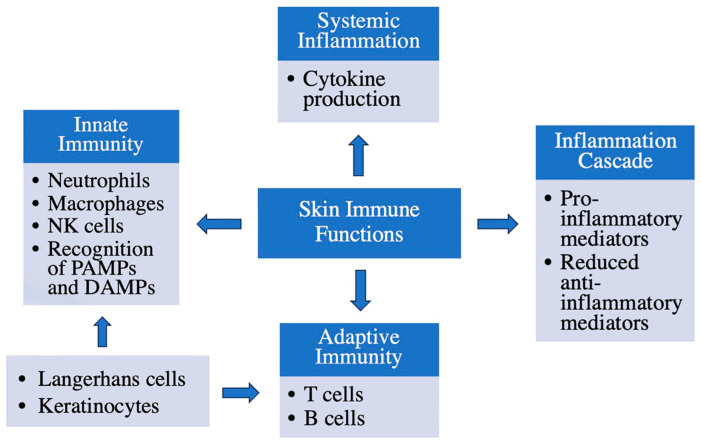Figure 3.
Immune functions of the skin. The skin has several important immune functions: in addition to forming a barrier to protect against microbial invasion, keratinocytes play a role in sensing and responding to environmental insults, as do Langerhans cells, resident dendritic cells. Resident T cells, macrophages and natural killer (NK) cells also monitor the tissue for potential harmful actors. Many of these cells can be activated by microbial products (pathogen-associated molecular patterns, or PAMPs) or endogenous molecules released by endangered or damaged cells (danger- or damage-associated molecular patterns, or DAMPs). In addition, these cells can recruit other immune cells into the skin to mount an immune response. Thus, infiltrating neutrophils, monocytes/macrophages and T and B cells may also participate in the response of the immune system.

